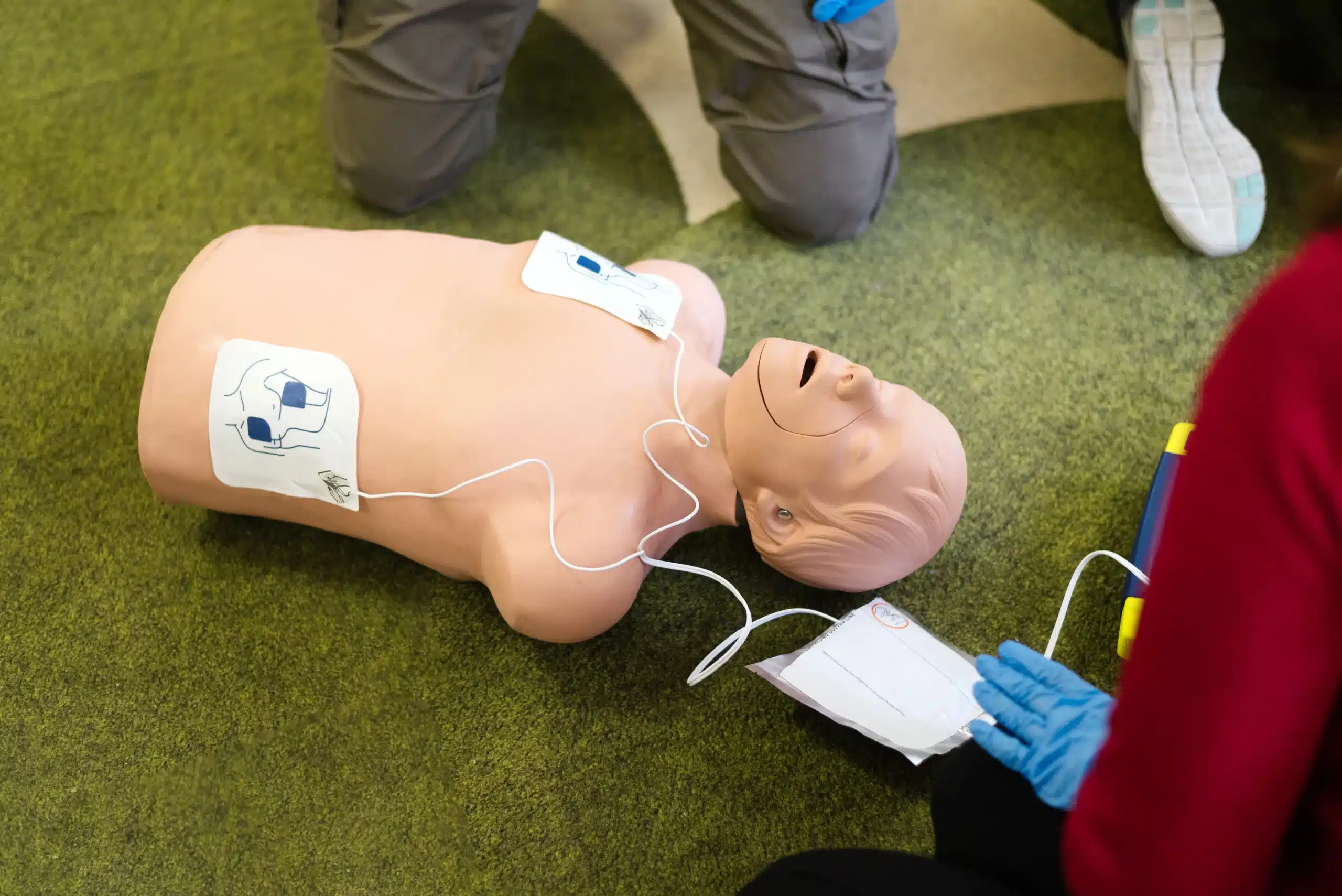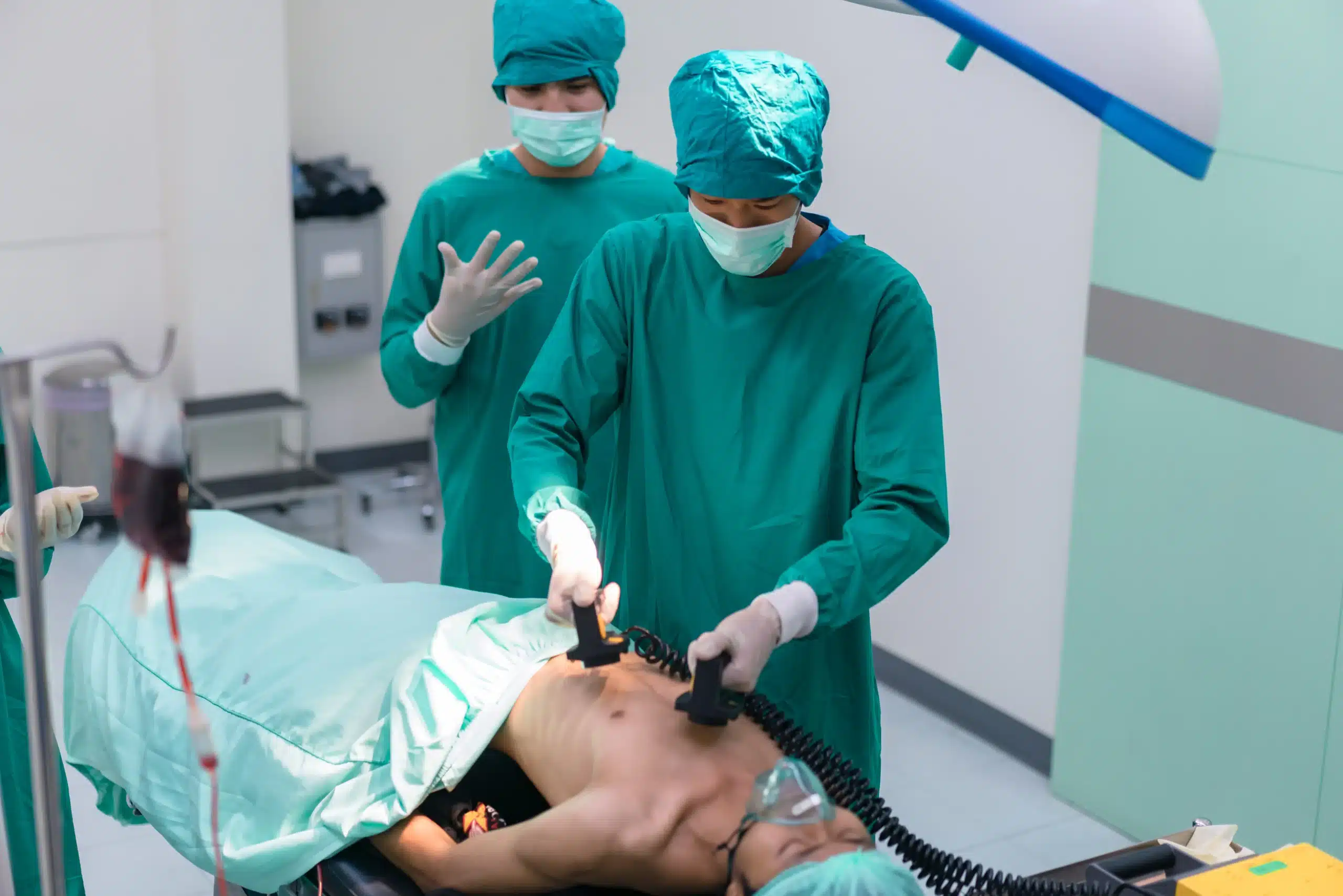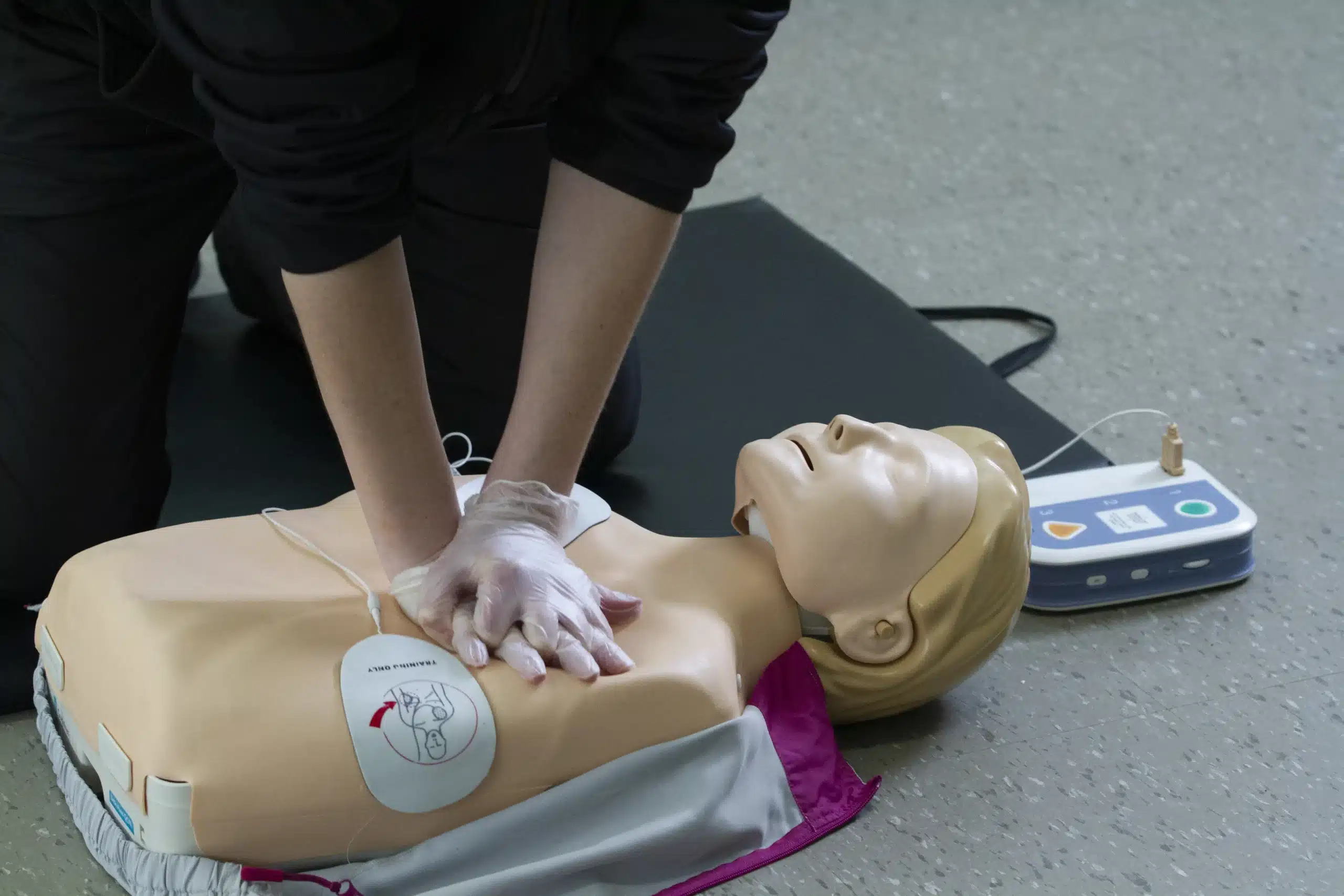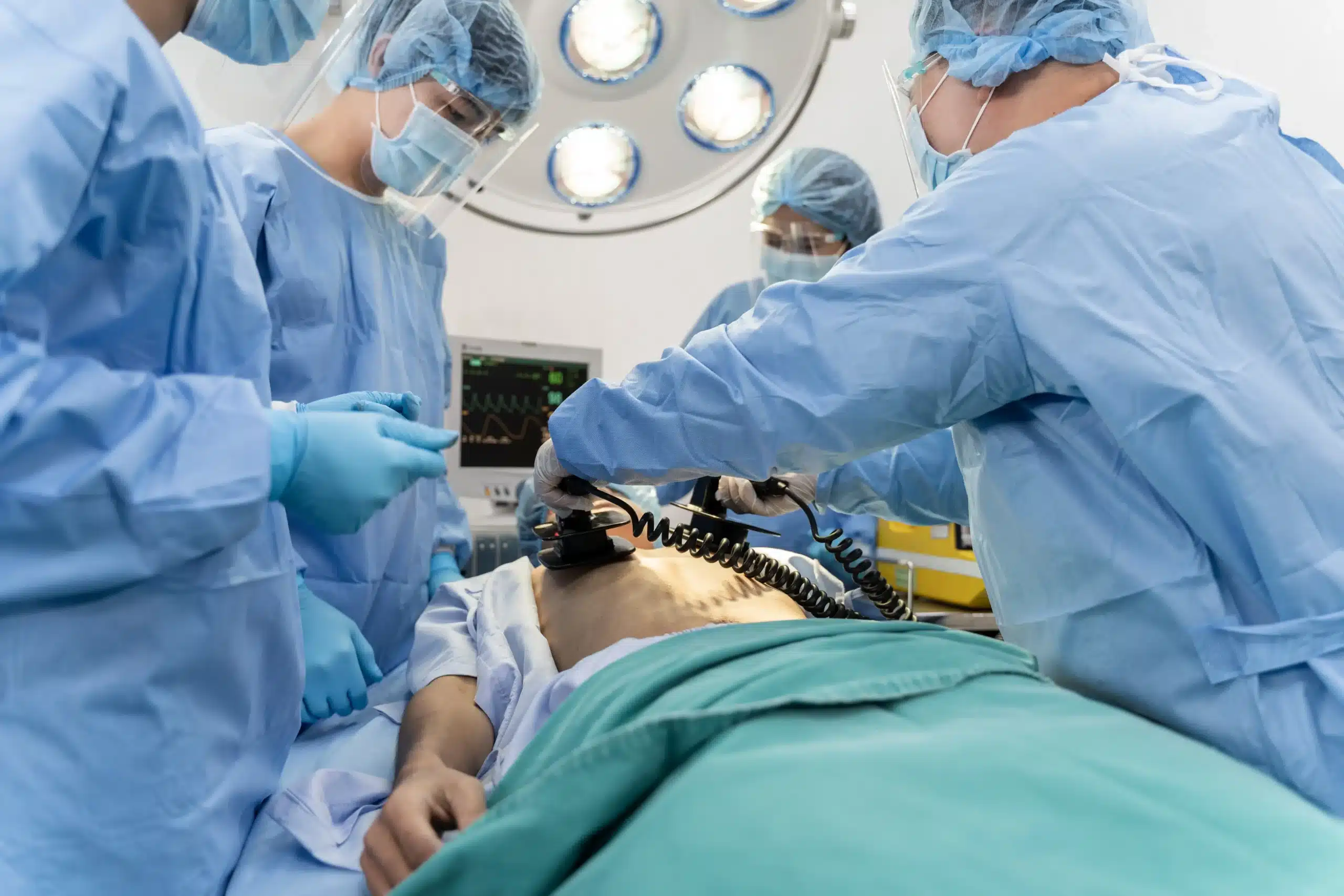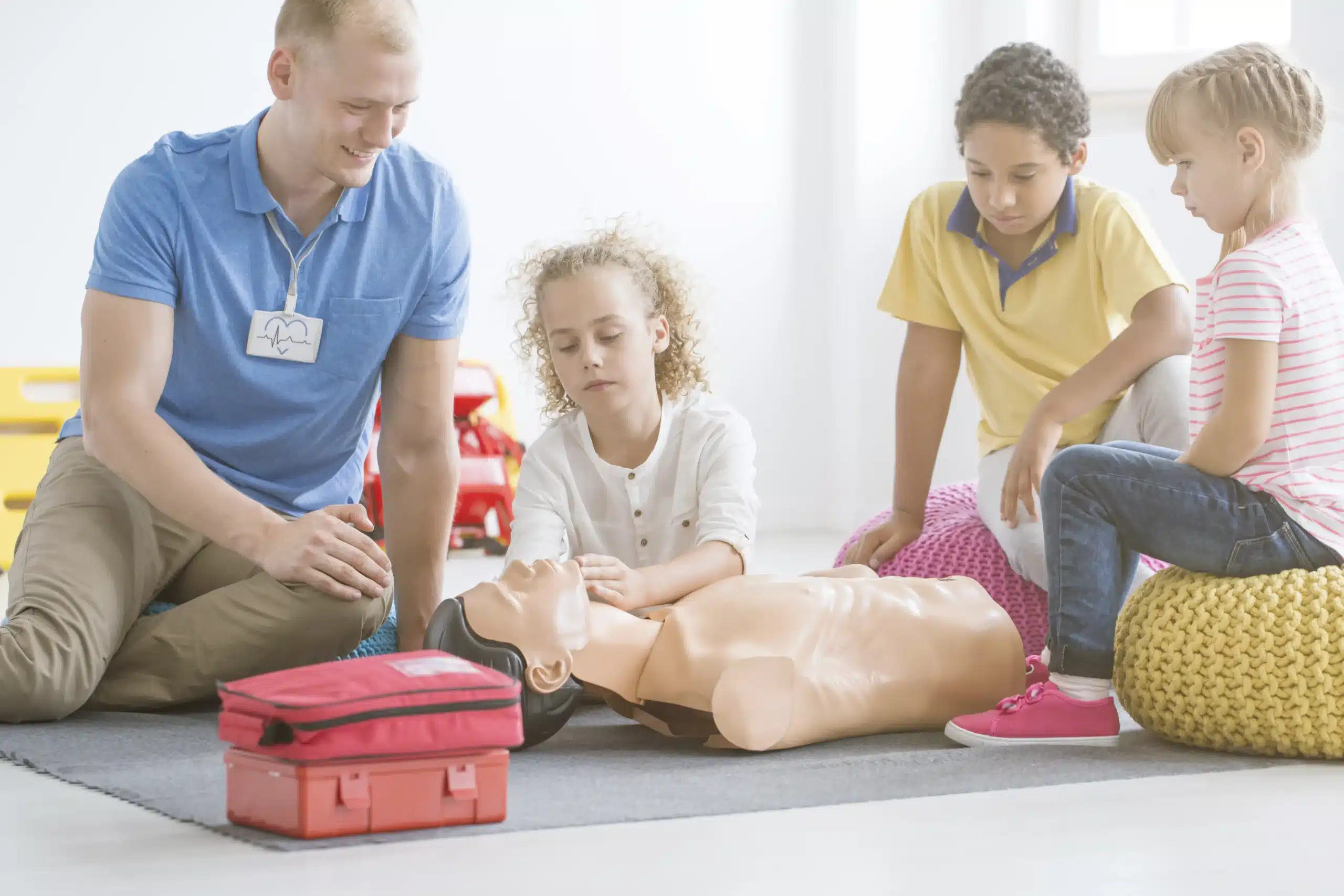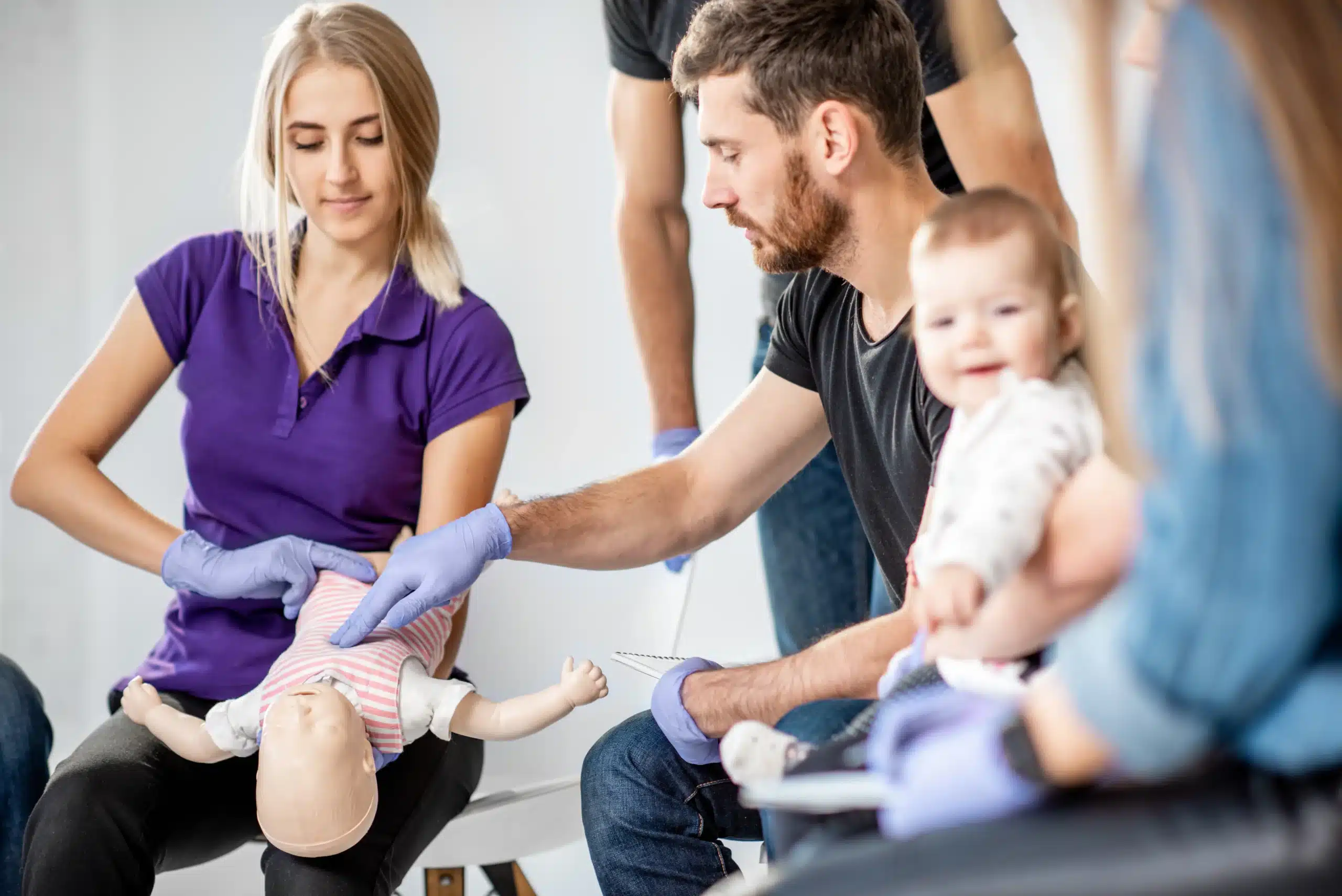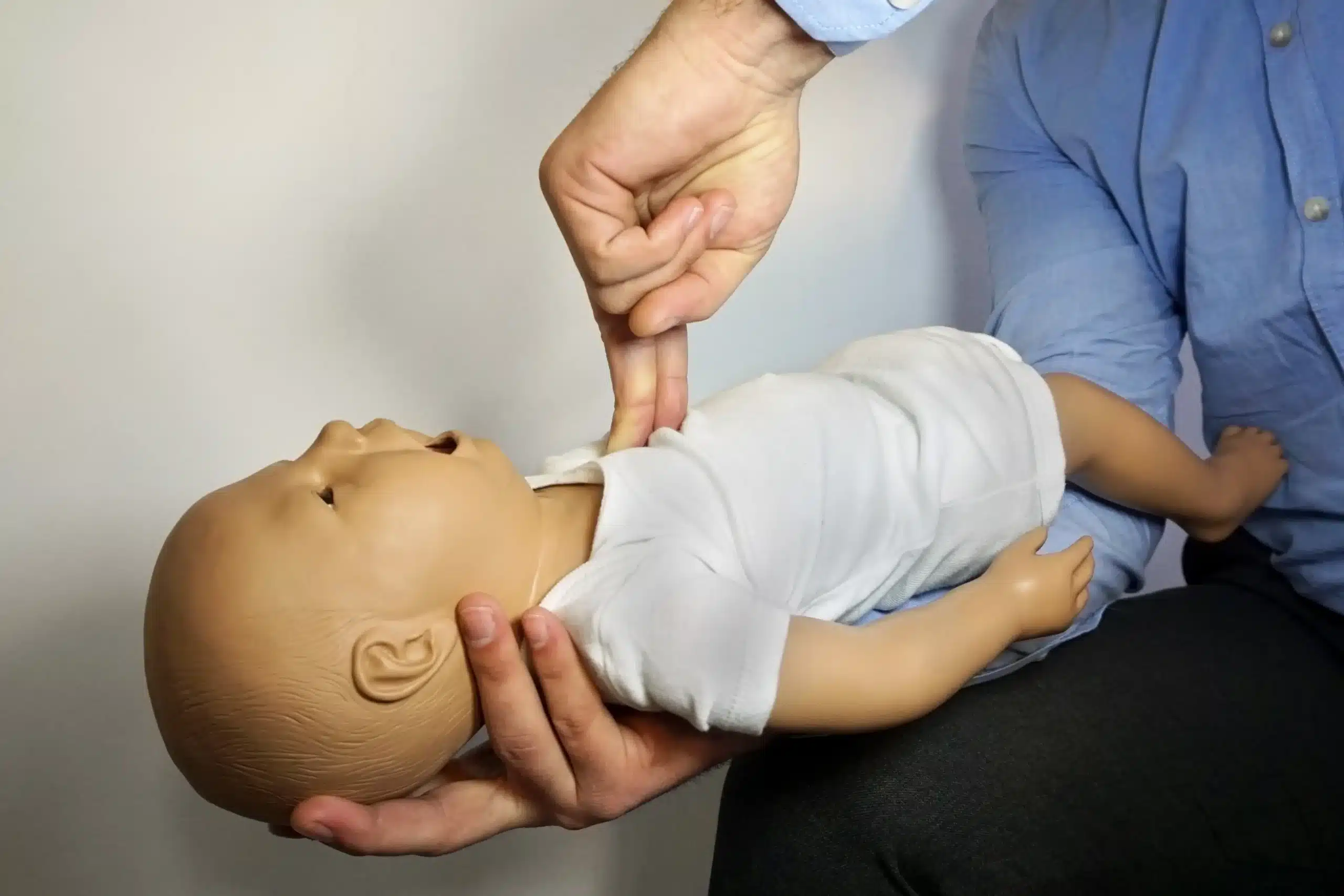Want to feel confident and prepared to handle medical emergencies? Basic Life Support (BLS) training equips you with the skills to provide critical care in life-threatening situations. This comprehensive guide will walk you through the essentials of BLS, from understanding its importance to finding BLS classes near me that fit your needs and schedule. We’ll cover the key skills you’ll learn, different learning formats (in-person, online, and blended), how to find reputable BLS providers, what to expect during training, the costs involved, and common misconceptions about BLS certification. Let’s empower you to make a difference—start your BLS journey today.
Key Takeaways
- BLS certification goes beyond basic CPR, providing comprehensive training for various medical emergencies. Whether you’re a healthcare professional or simply want to be prepared, BLS equips you with life-saving skills like using an AED and advanced airway management. Explore different learning formats to find the best fit for your schedule.
- Finding a reputable training center is crucial for a valuable BLS learning experience. Look for accreditation from trusted organizations like the American Heart Association and experienced instructors. Consider class size and student feedback to ensure you’re getting the best possible training. Directly contacting providers to discuss your needs and compare options is always a good idea.
- Proper preparation sets you up for success in your BLS class. Reviewing course materials beforehand can boost your understanding, while comfortable clothing allows for easy participation in hands-on activities. Remember the BLS certification process involves both a written exam and a practical skills assessment, so adequate preparation is essential.
What is BLS?
Definition and Importance
BLS (Basic Life Support) is a critical certification for healthcare professionals, first responders (doctors, nurses, EMTs, paramedics, etc.), and other qualified rescuers. It goes beyond standard CPR, equipping individuals with the skills to handle life-threatening emergencies. While CPR focuses on immediate chest compressions and rescue breaths, BLS covers a broader range of techniques for cardiac arrest, respiratory distress, and airway obstructions. The goal is to provide high-quality care until more advanced medical personnel arrive, significantly improving patient outcomes and increasing survival chances. If you’re pursuing a healthcare career or a related field, BLS certification is often a must.
Key Skills Taught
BLS training covers essential lifesaving skills, including CPR for adults, children, and infants, AED (automated external defibrillator) use, and clearing obstructed airways. The curriculum, often developed and reviewed by medical experts like the American Heart Association, provides a comprehensive understanding of recognizing and responding to various emergencies. You’ll learn to quickly assess a patient’s condition, perform effective chest compressions, deliver rescue breaths, and use an AED when necessary. BLS also emphasizes teamwork and communication—vital in emergencies. These skills are invaluable not only for healthcare providers but for anyone who wants to be prepared to help in a crisis.
Find BLS Classes Near You
Finding the right BLS class is easier than you think. With various learning formats available, you can choose the option that best suits your schedule and learning style. Let’s explore the different types of BLS classes you can find.
In-Person Classes
In-person BLS classes offer a hands-on learning experience perfect for those who thrive in a traditional classroom setting. These courses provide direct interaction with certified instructors who can offer personalized feedback and guidance. This format emphasizes practical skills development, allowing you to practice CPR techniques and gain confidence in your abilities. Safety Training Seminars offers American Heart Association-certified CPR, BLS, ACLS, and PALS classes in San Ramon, making it a convenient option for residents of San Ramon, Dublin, and Danville. For those seeking comprehensive training and the opportunity for real-time feedback, in-person classes are an excellent choice. San Ramon CPR Courses also offers group discounts for in-person training, making it an affordable option for groups.
Online BLS Courses
Online BLS courses provide a flexible and convenient alternative to traditional in-person classes. This format allows you to learn at your own pace, fitting the training around your busy schedule. Online courses often come at a lower price point than in-person training, making them a budget-friendly option. The American Heart Association’s RQI program is a great example of an effective online BLS certification course. RQI emphasizes accessible online training, making it easier for healthcare professionals to obtain and maintain their BLS certification. While online courses offer flexibility, it’s important to choose a program that includes a hands-on skills assessment component, like those offered by San Ramon CPR courses, to ensure you’re fully prepared to perform BLS in a real-life scenario.
Blended Learning
Blended learning combines the best of both worlds, offering the flexibility of online coursework with the practical application of in-person skills sessions. This hybrid approach allows you to complete the cognitive portion of the course online at your own pace, then attend an in-person session to practice your skills and receive feedback from an instructor. Blended learning is a great option for those who want a more comprehensive learning experience while still maintaining some flexibility in their schedule. Pleasanton CPR Classes offers a variety of courses, including blended learning options for BLS certification. This format ensures you receive both the knowledge and practical skills necessary to perform BLS effectively.
Find Reputable BLS Providers
Finding the right BLS provider is crucial for a high-quality learning experience. Here’s how to find reputable BLS training near you:
Local Healthcare Facilities
Hospitals and clinics often offer BLS certification courses. Check with hospitals in your area, like those in San Ramon, Dublin, or Danville, to see if they provide BLS training. These facilities often have experienced instructors and up-to-date equipment. As CPR Education notes, “Quality CPR training does save lives,” and local healthcare facilities understand the importance of this training for both professionals and the community. San Ramon residents and businesses rely on quality CPR training to respond effectively to emergencies.
Community Centers and Fire Departments
Many community centers and fire departments offer BLS classes to the public. These classes are often more affordable than those offered by private companies. Check with your local community center or fire department for upcoming BLS courses. Pleasanton CPR Classes points out that Safety Training Seminars offers various American Heart Association-certified courses, including BLS, in San Ramon. They also highlight San Ramon CPR Courses as a valuable resource for BLS certification.
Online Directories and Search Tools
Use online directories and search tools to find BLS providers near you. Websites like the American Heart Association and the American Red Cross offer search tools to locate certified training centers. You can also use general search engines to find local providers. When searching online, consider whether you prefer in-person or online BLS courses. San Ramon CPR Courses notes that online courses are generally more budget-friendly, while in-person training offers a hands-on learning experience.
Assess Provider Credibility
Once you’ve found a few potential providers, take time to assess their credibility. Look for providers that are accredited by a recognized organization like the American Heart Association. Check if the instructors are certified and experienced. Reading reviews and testimonials from previous students can also give you valuable insights. Safety Training Seminars, for example, is a woman-owned AHA Training Center offering high-quality BLS courses in San Ramon. Choosing a credible provider ensures you receive accurate information and a recognized certification.
What to Expect in Class
Knowing what to expect can help you feel prepared and confident on the day of your BLS class. Here’s a glimpse into a typical BLS course:
Course Duration and Format
BLS certification courses typically last about three hours. You can find courses designed for healthcare providers, as well as those who want to become instructors. San Ramon CPR Courses offers in-person classes at our convenient Bishop Ranch 1 location, serving San Ramon, Dublin, and Danville, CA. Most providers offer two learning formats: in-person and blended learning (a combination of online and in-person training).
Curriculum Overview
The BLS course curriculum is developed and reviewed by medical experts, ensuring you receive up-to-date, evidence-based training. The curriculum covers core life-saving techniques, including CPR, AED use, and how to relieve choking. You’ll also learn about the chain of survival and how to work effectively as part of a team during a medical emergency.
Hands-On Practice
BLS classes emphasize practical, skills-based learning. Expect hands-on practice with mannequins and other training equipment. You’ll work through various realistic scenarios to build muscle memory and confidence in your abilities. This hands-on approach ensures you can apply your knowledge effectively in a real emergency.
Equipment and Materials
Instructors provide all the necessary equipment for in-class training, including mannequins, AED trainers, and other materials. San Ramon CPR Courses issues certification cards upon successful course completion, giving you immediate proof of your qualifications. Many providers also offer refresher materials to help you maintain your skills between renewals.
Cost of BLS Classes
Knowing the price range for BLS classes helps you budget and compare options. Several factors influence the final cost, so understanding these can help you find the best value.
Average Price Range
BLS class prices vary based on location, format, and provider. Generally, online BLS courses are more budget-friendly than in-person training. In-person classes in San Ramon may have a slightly higher price tag because of the hands-on learning and classroom setting. For the most accurate pricing, check directly with providers like San Ramon CPR Courses for their current rates. Pleasanton CPR Classes also offers a low price guarantee, which can be a helpful benchmark as you research.
Factors Affecting Cost
Beyond the basic course fee, several factors can influence the total cost. Initial certification classes may have a different price than renewal courses. Some providers include study materials, while others charge separately. Also, consider extras like certification card printing or expedited shipping. If you’re booking for a group, San Ramon CPR Courses offers group discounts, which can lower the per-person cost.
Discounts and Financial Assistance
Look for potential discounts to make BLS training more affordable. Many providers, including San Ramon CPR Courses, offer discounts for groups, students, or organizations. Check if your employer offers reimbursement or professional development funds. While financial assistance programs specifically for BLS certification are rare, exploring options through professional organizations or community groups may be worthwhile. For healthcare professionals, the RQI program offered by San Ramon CPR Courses can be a cost-effective way to maintain BLS, ACLS, and PALS certifications.
Choose the Right BLS Class
Finding the right BLS class means considering a few key things to ensure you get top-notch training that fits your needs and prepares you for actual emergencies. Here’s what to look for:
Accreditation and Certification
First, check if the training center and its BLS classes are accredited by a respected organization like the American Heart Association (AHA). AHA-certified courses stick to national standards, so you can trust the quality of your training and know it’ll be recognized. San Ramon CPR Courses offers these certified classes, which means your certification will be widely accepted.
Instructor Qualifications
The instructor’s expertise is a big deal. Look for instructors with a lot of experience in emergency response and a strong BLS background. Experienced instructors can offer practical tips and make learning engaging. Instructors like Josh Sauberman bring real-world know-how to the classroom, getting students ready to handle emergencies.
Class Size and Scheduling
Consider class size and how the schedule works for you. Smaller classes usually mean more individual attention from the instructor and more chances for hands-on practice. Look for classes that fit your schedule and have a good balance of instruction and practice. Many training centers focus on convenient scheduling, making it easier to find a class that works. San Ramon CPR Courses offers group discounts, a smart choice if you want to coordinate schedules and save some money.
Reviews and Feedback
Before signing up, check out what other students have to say. Reading reviews and feedback gives you valuable insight into the quality of instruction, the overall experience, and the training center’s dedication to student success. A low price guarantee, like the one from San Ramon CPR Courses, often shows a commitment to both affordability and high-quality training. Considering these factors helps you choose a BLS class that gives you the skills and confidence to handle emergencies effectively.
Get BLS Certified
Once you’ve found your BLS class, you’ll want to understand the certification process. Here’s what you need to know about the exam, passing requirements, and keeping your certification current.
Exam Format and Passing Requirements
BLS certification involves two parts: an online written exam and an in-person skills assessment. The American Heart Association (AHA) offers blended learning that combines online coursework with hands-on practice. This format helps you develop the knowledge and practical skills to handle real-life emergencies. It’s important to know there aren’t any fully online AHA-certified BLS courses—the in-person skills check is a must.
Certification Validity and Renewal
Your BLS certification remains valid for two years. To maintain your credentials, you’ll need to recertify before it expires. You can usually find renewal courses starting about a month before your current certification ends. This process ensures healthcare providers and other professionals stay current on the latest BLS techniques and guidelines. Keeping your certification up-to-date shows your commitment to providing excellent care.
Top BLS Class Providers
Finding the right BLS class means choosing a reputable provider that fits your needs and learning style. Here are a few respected options:
American Heart Association (AHA)
The American Heart Association sets the standard for CPR and emergency cardiovascular care. Their BLS certification is widely recognized and respected. AHA courses offer comprehensive training, giving you the skills to respond effectively in emergencies. They also offer helpful resources and support materials.
American Red Cross
The American Red Cross is another trusted name in BLS training. They offer flexible learning options, including online, in-person, and blended formats. This lets you choose the best way to learn based on your schedule and how you learn best. The Red Cross also provides plenty of resources and support.
National Safety Council
The National Safety Council partners with organizations across the country to offer top-notch safety training, including BLS certification. You can often find NSC-certified courses at local community centers, businesses, and healthcare providers. Visit their website to find a course near you.
San Ramon CPR Courses
If you’re in the San Ramon, Dublin, or Danville area, San Ramon CPR Courses offers convenient and affordable AHA-certified BLS classes. They also offer other important certifications like ACLS, PALS, and CPR/First Aid. Their focus on affordability and flexible scheduling makes them a great option for busy professionals and anyone looking for thorough training. Check out their low price guarantee.
Local Hospitals and Medical Centers
Many hospitals and medical centers offer BLS certification courses to both healthcare professionals and the general public. These courses are often taught by experienced medical staff and give you access to modern training equipment. Contact your local hospital or check their website for details on BLS classes. For locals, San Ramon Regional Medical Center is a convenient option.
Common BLS Misconceptions
It’s easy to get confused about BLS certification, especially when you’re just starting your research. Let’s clear up some common misconceptions so you can confidently choose the right course.
BLS vs. CPR
Many people use the terms BLS (Basic Life Support) and CPR (Cardiopulmonary Resuscitation) interchangeably, but they aren’t quite the same. CPR focuses on chest compressions and rescue breaths for someone who has stopped breathing or has no pulse. BLS builds on those CPR skills. Think of BLS as the next level. It includes CPR techniques, but also covers advanced airway management, using bag-valve masks, and team dynamics during a medical emergency. BLS certification is designed for healthcare providers and first responders, such as doctors, nurses, paramedics, and EMTs.
Who Needs BLS Certification?
While knowing CPR is valuable for anyone, BLS certification is typically required for specific professions. It’s essential for most healthcare professionals and is often a prerequisite for other advanced certifications. If you’re considering a career in healthcare, check the specific requirements for your desired role. Some workplaces also require BLS certification for employees in non-medical roles, such as lifeguards, teachers, and childcare providers. If you’re unsure, check with your employer or professional licensing board.
Online vs. In-Person Training
While you can find parts of BLS training online, the American Heart Association (AHA) BLS course requires both an online portion and an in-person skills assessment. There’s no way around the in-person skills check—you’ll need to demonstrate your skills to a certified instructor. This hands-on component is crucial for mastering the techniques and building confidence. While online-only options may seem convenient, they won’t meet the AHA’s requirements. A blended learning approach, combining online coursework with in-person skills practice, offers a flexible way to learn the material at your own pace and then practice with expert guidance.
Prepare for Your BLS Class
Getting ready for your BLS class doesn’t have to be stressful. A little preparation goes a long way toward a smooth and successful learning experience. Here’s what you need to know:
Required Materials
Most BLS course providers, including San Ramon CPR Courses, will use the most current edition of the American Heart Association’s BLS Provider Manual. Often, you can purchase this directly through the training center when you register. Some providers may offer ebooks, while others use traditional textbooks. Check with your chosen provider to confirm their requirements. You’ll also want a pen and notepad to jot down important notes during the course.
Pre-Course Study
While not always mandatory, pre-course study can give you a real advantage. Reviewing the BLS Provider Manual beforehand can familiarize you with the core concepts. This can make the in-class instruction more effective, allowing you to focus on practicing the skills. San Ramon CPR Courses offers RQI classes, a great way to refresh your skills and knowledge before your BLS course.
What to Wear and Bring
Comfort is key for a BLS class. You’ll be participating in hands-on training, including CPR practice, so comfortable clothing is essential. Think loose-fitting clothes that allow for a full range of motion. Avoid restrictive clothing or anything that might interfere with your ability to perform chest compressions. Bring a small bag to hold your BLS manual, notepad, pen, and any personal items. Since you’ll be working closely with other students, remember to bring a water bottle to stay hydrated.
Related Articles
- BLS Certification in Danville: Your Guide – San Ramon CPR Classes
- Basic Life Support (BLS) in San Ramon: A Practical Guide – San Ramon CPR Classes
- BLS Courses in Dublin: Your Complete Guide – San Ramon CPR Classes
- BLS Classes in San Ramon: Your Guide to Certification – San Ramon CPR Classes
- Your Guide to Basic Life Support (BLS) in Danville – San Ramon CPR Classes
Frequently Asked Questions
What’s the difference between BLS and CPR? CPR is a specific technique used within BLS. BLS encompasses a wider range of lifesaving skills for healthcare providers, including CPR, using an AED, and relieving choking. Think of CPR as one tool in the BLS toolkit.
Is online-only BLS certification available? No, American Heart Association-certified BLS always involves an in-person skills test. You can do some of the coursework online through blended learning, but demonstrating your skills in person is a must.
How much do BLS classes typically cost? The cost varies depending on the training center, location, and course format. Online portions are generally less expensive than in-person training. Check directly with providers like San Ramon CPR Courses for their latest pricing. They also offer a low price guarantee.
How long does BLS certification last, and how do I renew it? BLS certification is valid for two years. You’ll need to take a recertification course before it expires. Many providers offer renewal courses starting about a month before your certification’s expiration date.
What should I expect during a BLS class? Expect a mix of interactive learning, demonstrations, and hands-on practice. You’ll learn the latest techniques for CPR, AED use, and other essential skills. The class will cover adult, child, and infant CPR. Come prepared with comfortable clothing and your BLS provider manual.
